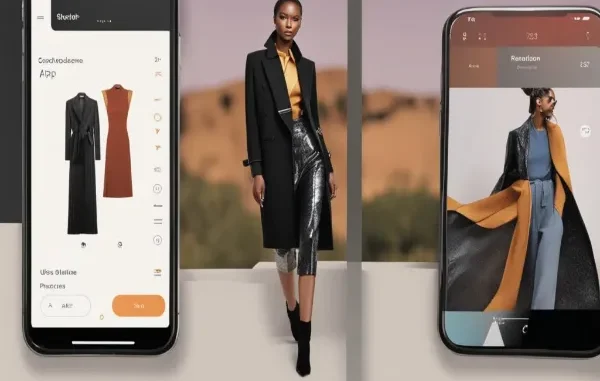
Modern retail consumers face an overload of options and lack the time to explore them all. Companies struggle to present their product range to interested buyers because of this. It often results in lower conversion rates and reduced earnings. On top of that, rising expectations for customized experiences are making the situation even tougher.
Artificial intelligence, which is changing how companies meet customer demands, can also address these issues—specifically through AI-powered stylists. As per a report, the global AI stylist market is projected to grow by 38.3% between 2024 and 2031. This rise comes from their ability to reduce the effort needed for product discovery while making shopping more personal.
AI-powered personal stylists can augment human efforts rather than replacing them. They help retail businesses deliver distinct buying journeys, boost conversion rates, and raise a customer’s average order value.
The Rise of Digital Fashion Assistants
With online retail sites and mobile apps offering style advice formerly only available at boutique salons. An AI-powered personal stylist suggests outfits in moments using information about a shopper’s history, behaviors, and preferences; these services enhance replenishment models that ensure popular items and coordinating accessories are always in stock
Main Features
- Catalogs existing apparel items, while identifying any necessary apparel items missing
- Selects new items that coordinate with the existing styles
- Changes suggestions as these situations change in real time
How the AI Stylist Learns
A robust AI stylist starts by collecting traces: favorite colors, brands, and events saved in the user’s profile. After the AI has collected enough clues, it navigates between large catalogs of clothes, tagging items by their cuts, fabrics, and purposes. Each time a shopper likes or skips an item, it refines the stylist’s understanding and continuously fine-tunes the selections provided.
Learning Cycle
- Observation: Tracks clicks, wish lists, and order history
- Classification: Labels each clothing item as casual, formal, or outdoor.
- Feedback Loop: Updates its style model based on user reaction
Benefits of a Personal AI Stylist
A personal AI stylist blends speed with personalization to offer several clear advantages:
- Rapid Exploration
- Instantly generates hundreds of outfit combinations
- Covers a wider variety of styles than any single human expert
- Round-the-Clock Service
- Provides styling help anytime, even during off hours
- Eliminates the need for scheduled consultations
- Cost-Effective Advice
- Costs less than an in-person styling session
- Makes expert tips available to shoppers on a budget
- Early Trend Spotting
- Picks out new colors and styles before they become common
- Draws insights from thousands of users to stay ahead of the curve
- Personal Growth
- Encourages confidence by suggesting bold new looks
- Helps users expand their style horizons at their own pace
Recognizing the Limitations
Even the best AI-powered personal stylist can miss human subtleties. It may not fully grasp a client’s mood, body language, or the emotional context of a major life event. Budget constraints can go unheeded unless shoppers set clear spending limits. Privacy questions may surface if users worry about how their style data is stored and used.
Common Shortcomings
- Lacks emotional nuance needed for special occasions
- May suggest items beyond a user’s budget range
- Struggles with unique body shapes without extensive input
- Raises concerns around long-term data security
Blending Digital Tools with Human Expertise
Shoppers often get the best results by mixing both methods. Stores can provide:
Digital Curation
- A personal AI stylist quickly narrows thousands of options
- Presents an initial palette of trend-driven pieces
Human Refinement
- Live stylists review digital selections
- Add personal touches, mood-driven advice, and expert fit adjustments
This two-step model preserves the empathy and creative flair of human experts while leveraging technology for scale and speed.
Guidelines for Retailers Implementing AI Stylists
- Define Clear Objectives: Decide whether the AI stylist will boost engagement, drive conversions, or both.
- Ensure Data Quality: Provide accurate style profiles and keep catalogs up to date.
- Set Ethical Standards: Explain how you’ll use their data and give them the choice to say no.
- Train Staff for Collaboration: Teach human stylists to interpret AI suggestions and integrate them seamlessly.
- Monitor Performance: Track metrics such as click-through rates, conversion, and repeat usage of the AI stylist
Real-World Use Cases
- Seasonal Wardrobe Refresh: An AI stylist points out key spring pieces, and a human expert adds the finishing touches.
- Event-Specific Styling: Users receive instant wedding guest ideas, followed by fine-tuned advice from a live stylist.
- Budget-Conscious Shopping: Digital tools set a price limit, and then a stylist picks items that offer the best value.
- Sustainability-Focused Outfits: An AI tool flags eco-friendly brands; a human stylist advises on mixing and matching responsibly.
Future Trends in Personalized Styling
As technology evolves, digital style assistants will feel more like trusted friends:
- Augmented Reality Try-On: Virtual mirrors show shoppers how clothes look on them.
- Voice-Activated Styling: Users describe moods or events to receive hands-free suggestions.
- Social Integration: Shoppers send AI-picked outfits to friends to get quick feedback.
- Cross-Channel Consistency: AI stylist profiles sync across web, mobile, and in-store kiosks.
These advances promise to make a personal AI stylist even more intuitive and engaging.
Tips for Shoppers
- Be Active in Feedback: Rate suggestions and mark favorites to speed up the learning process.
- Set Clear Boundaries: Enter budget limits and style dislikes to avoid irrelevant picks.
- Combine Methods: Use digital advice for broad exploration and human guidance for final touches.
- Update Your Profile: Add new events, favorite colors, and fit adjustments to keep recommendations fresh.
Bottom Line
Technology and human insight make a powerful styling partnership. A digital AI stylist delivers unmatched speed, scale, and trend awareness, while a human expert contributes empathy, nuanced feedback, and creative confidence. When viewed as an ally rather than a replacement, the AI-powered personal stylist elevates the shopping experience—ensuring every customer feels understood, empowered, and effortlessly stylish.






Leave a Reply